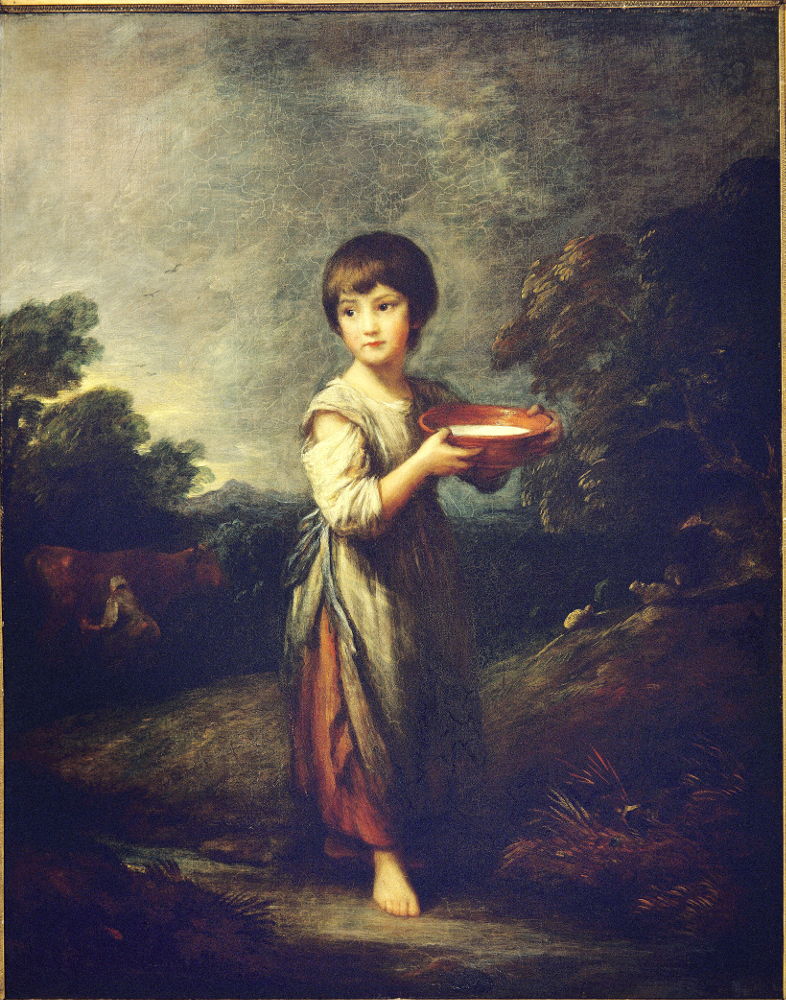More information
This picture, originally titled Village Girl with Milk, is one of a number of late works by Gainsborough which celebrated the idyllic life of the countryside and which offered the painter a welcome break from the demands of formal portraiture. A number of these Gainsborough ‘pastorals’ used the same child model who was, contrary to the claims of the title, a young boy named Jack Hill. Gainsborough met this child – the son of a povery-stricken rural family – while walking in the countryside near his home and Hill became the model for many of Gainsborough’s child portraits, often posing as a small girl rather than a boy. Like most of these portraits, this one reveals a strong influence of the 17th century Spanish painter Murillo, whose sentimental images were highly regarded in 18th century England.
Painted in 1786, the work was exhibited by the artist in London and Liverpool during the next 18 months. It was bought for 300 pounds by the collector Thomas Macklin either in late 1777 or early 1788, to form part of his ‘Poets’ Gallery’ (1788-1800), a set of images illustrating the work of leading British poets. Gainsborough had already agreed to contribute to this venture, but accounts differ as to whether he or Macklin identified this particular work as one that would form part of it. Macklin, a London printseller, had at the beginning of 1787 advertised a plan to publish a Series of Prints Illustrative of the Most Celebrated British Poets, a set of 100 images, and renamed his shop the Poets’ Gallery while the project was underway. Works by established artists were commissioned, along with reproductions in print. The paintings were hung on the walls of the ‘gallery’, with buyers encouraged by the display to purchase the reproductions.
For this venture, Gainsborough’s work was renamed Lavinia, and served to illustrate poet James Thomson’s popular work The Seasons whose ‘Autumn’ section features a peasant girl of that name. He produced another work, Hobbinol and Gandaretta, for Macklin’s gallery also. Meanwhile, Macklin commissioned celebrated printmaker Bartolozzi to produce the print from Lavinia, paying him 250 pounds for his reproduction, published in 1790. In 1799, he sold the painting for scarcely less than half its original purchase price. He died the following year, bringing the poets project and others to an end.
Through the next century, Gainsborough’s painting passed through several hands, and with several slightly different titles, ending up with art dealers Leggatt Bros in 1918. It was probably sold to Bailey in that year. There are painted copies of the work, as well as reproductive prints after it by later printmakers.
|

